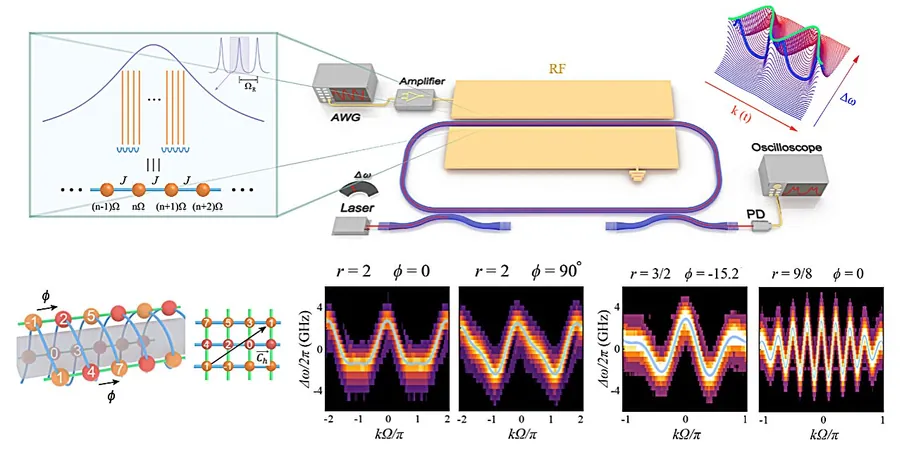
Revolutionary Breakthrough in Quantum Photonics: A New Era for Low-Frequency Photonic Simulators!
2024-12-27
Author: John Tan
In a stunning advancement in the field of quantum photonics, a research team led by Professor Li Chuanfeng at the University of Science and Technology of China (USTC) has unveiled a groundbreaking on-chip photonic simulator that can mimic arbitrary-range coupled frequency lattices while integrating gauge potential. This innovative study has been published in the esteemed journal, Physical Review Letters.
The pursuit of sophisticated simulators capable of replicating the intricate dynamics of real-world systems remains a pivotal focus within quantum physics. Photonic systems have emerged as robust candidates due to their flexible control over vital properties like polarization and frequency, making them ideal for quantum simulations.
However, significant hurdles have persisted in constructing frequency lattices that can effectively model complex structures such as atomic chains and nanotubes—key components for understanding the behavior of low-dimensional materials. To overcome this challenge, the research team strategically employed thin-film lithium niobate chips, renowned for their remarkable electro-optic characteristics. By periodically modulating an on-chip resonator, the researchers successfully observed the formation of band structures, a monumental stride that facilitates simulations with arbitrary-range coupling.
What’s truly remarkable is that their method allowed for couplings up to eight to nine times greater than the lattice constant, all while drastically lowering the required modulation frequency by over five orders of magnitude. This remarkable achievement emerged from the inclusion of multiple lattice points within a single resonant peak, effectively streamlining the conventional challenges faced in applying and detecting multiharmonic signals at ultrahigh frequencies on semiconductor chips.
The study emphasizes low-frequency radio-frequency modulation, providing unprecedented flexibility in selecting lattice points and regulating compound interactions. This innovative approach drastically reduces frequency requirements, illustrating an astonishing decline from about 100 GHz to approximately 10 MHz in their practical examples. Such simplifications not only ease the complexities associated with design and fabrication but also reduce the stringent demands on measurement and source equipment.
This groundbreaking work not only mitigates the challenges posed by high-frequency on-chip synthetic dimensions but also preserves the scalability of traditional operational models, paving the way for extension into higher-dimensional quantum systems. The research successfully establishes high-dimensional and intricate frequency synthetic dimensions on thin-film lithium niobate optical chips.
Experts in the field have lauded this transformative achievement, heralding it as a significant milestone that “opens a new avenue within the realm of synthetic dimensions on photonic chips.” As this groundbreaking technology continues to evolve, it promises to propel quantum simulations into a new frontier, offering unprecedented insights into the complexities of quantum phenomena and their applications across various technological landscapes.
Stay tuned to see how this revolutionary development will influence future research and potentially reshape quantum technology!



 Brasil (PT)
Brasil (PT)
 Canada (EN)
Canada (EN)
 Chile (ES)
Chile (ES)
 Česko (CS)
Česko (CS)
 대한민국 (KO)
대한민국 (KO)
 España (ES)
España (ES)
 France (FR)
France (FR)
 Hong Kong (EN)
Hong Kong (EN)
 Italia (IT)
Italia (IT)
 日本 (JA)
日本 (JA)
 Magyarország (HU)
Magyarország (HU)
 Norge (NO)
Norge (NO)
 Polska (PL)
Polska (PL)
 Schweiz (DE)
Schweiz (DE)
 Singapore (EN)
Singapore (EN)
 Sverige (SV)
Sverige (SV)
 Suomi (FI)
Suomi (FI)
 Türkiye (TR)
Türkiye (TR)
 الإمارات العربية المتحدة (AR)
الإمارات العربية المتحدة (AR)